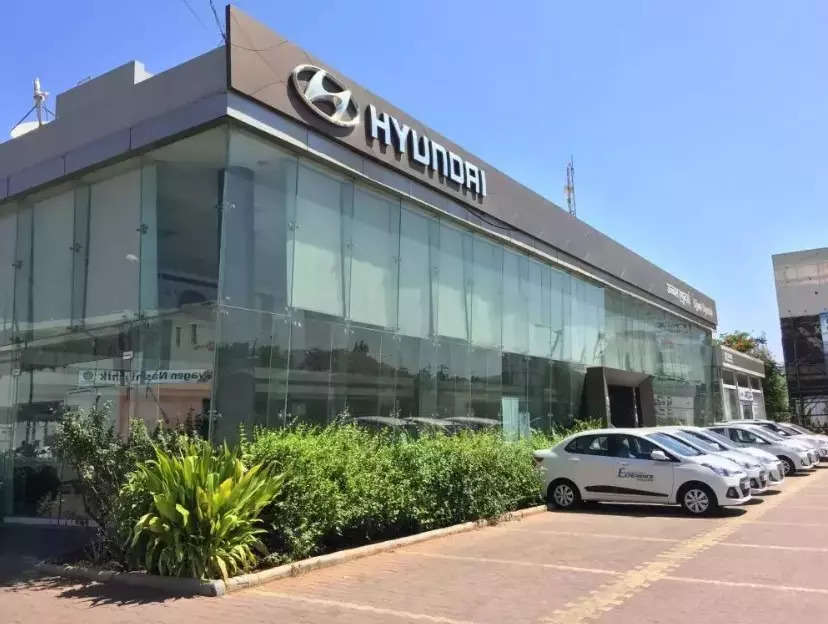
New Delhi: Hyundai Motor India has seen a near doubling of customers under 30 years in the past four years.
“This category is on the rise in our portfolio and with more youngsters onboard, it is amply clear that they will not compromise on features and, instead, want everything in their car. They are becoming role models for others,” Tarun Garg, Chief Operating Officer, told ETAuto in a telephone interview.

More importantly, it is not as if this is an urban phenomenon but more than apparent across every nook and corner of the country. According to him, first-time customers are moving straight to SUVs and virtually shunning the conventional hatchback which once ruled the roost. The sub INR 10 lakh Exter, as a case in point, is a “super success” story where 75% of its customers want sunroofs.
“They are willing to spend if they get value and aspiration fulfilled along with features and style. This is a good thing happening in the automobile industry where people are moving up the chain and numbers are rising,” said Garg. Reiterating that he was “going by data alone”, he cited the case of SUVs which now constitute 65% of Hyundai’s sales.
With six airbags now standard with all offerings, the response has been “great” and the fact that seven of the company’s models have ADAS (advanced driver assistance system) shows that “advanced safety is on the rise”. With two good successive growth years of 20% and 8% apiece, Garg said this reflected the new India which is not ready to compromise on safety, features, technology and aspiration. “There is a shift from functionality to aspiration while higher disposable incomes are fuelling sales of higher priced cars,” he added.
Rural is buying too
The Hyundai COO also did not buy the argument that rural India was still under distress which was the key reason for poor sales of hatchbacks. A school of thought believes that this category of cars needs a respite from the 28% GST to a level that is much lower (like 18%) in order to give a greater push to sales.
“Sales in rural India last fiscal saw the highest ever penetration of 19.5% for Hyundai which clearly shows that there is no such distress that is being spoken about. The pace of road infrastructure being created in recent times has also reduced the gap between rural and urban,” said Garg.
Aspirations of residents in smaller towns have also “gone through the roof” in recent years thanks to good crop yield, a better minimum support price and timely monsoons. Beyond this, access to information has improved considerably thanks to the proliferation of cell phone networks. “With better roads, finance, services etc people in rural India do not want to compromise on safety and are seeking the best features in SUVs,” he added.
Women are also playing a big role in the Hyundai growth story with more and more of them driving its range of cars. “They are becoming influencers too and key decision makers of the family,” said Garg.
The Korean automaker now has five women brand ambassadors: Smriti Mandhana, Shafali Verma and Jemimah Rodrigues from the cricket arena while Aditi Ashok is the golfer. Popular film star, Deepika Padukone, was recently roped in as brand ambassador and joins Shah Rukh Khan who has been the face of the company for over two decades.
Road ahead
As for growth prospects in the coming years, Garg said the last five years had seen a compounded annual growth rate of 4.3%. The past two fiscal years saw “huge growth” and the highest ever for the industry when other countries had not reached pre-Covid levels. “It is on a high base now and we therefore need to be practical about estimates going forward in terms of 4% CAGR,” he said.
As he elaborated, “We grew phenomenally in the past two years and, on top of that if we are checking 4% growth, it is very good. Seeking double digit growth is a bit farfetched.” This is because interest rates are still high and the world is not in the best of shape with two wars being fought in West Asia and Europe.
“We need to accept this reality and if we still grow with these headwinds, it is not bad at all. Once things stabilise, the story will hopefully get even better,” said Garg.
The other piece of good news is that there is no longer the fear of pressure on car ownership where the commonly held theory was that youngsters were not inclined to buying cars and would much rather rent them for drives. This trend was apparent just before the pandemic but changed in its aftermath where people wanted to buy at least one car for greater independence and maintaining social distance.
“Today, they want their own vacation cars for 500 km holidays rather than board flights or trains. Roads have improved and cars are safer with customers insisting on rear safety belts and airbags to ensure greater protection for their families,” explained Garg. All this puts in context the reasons for higher car sales and why ownership is now back in vogue.

















